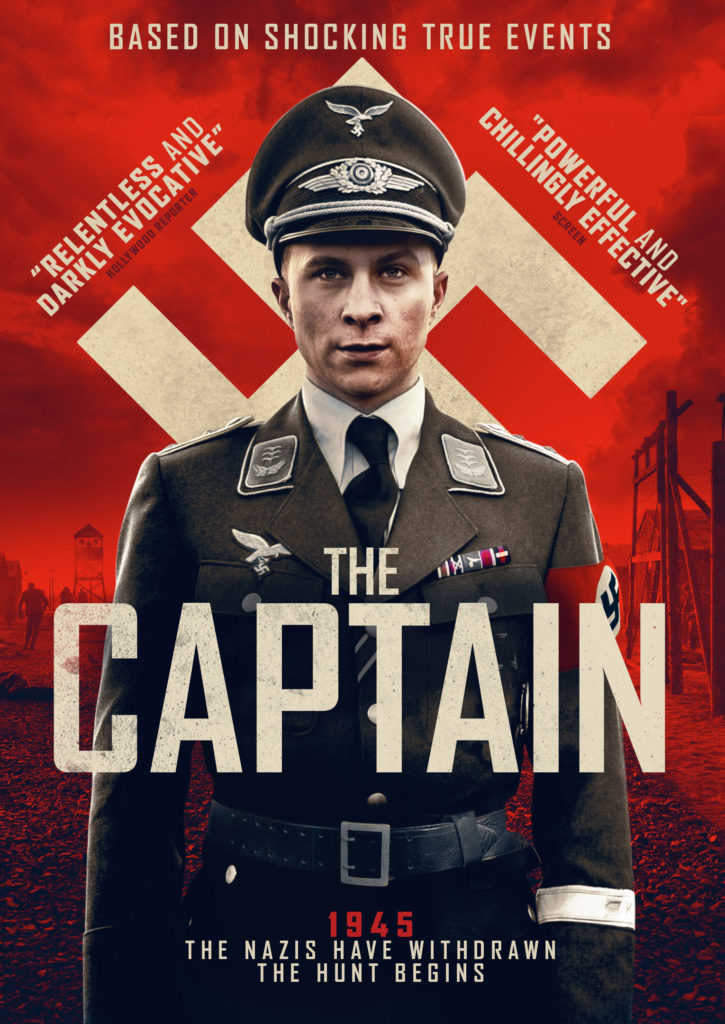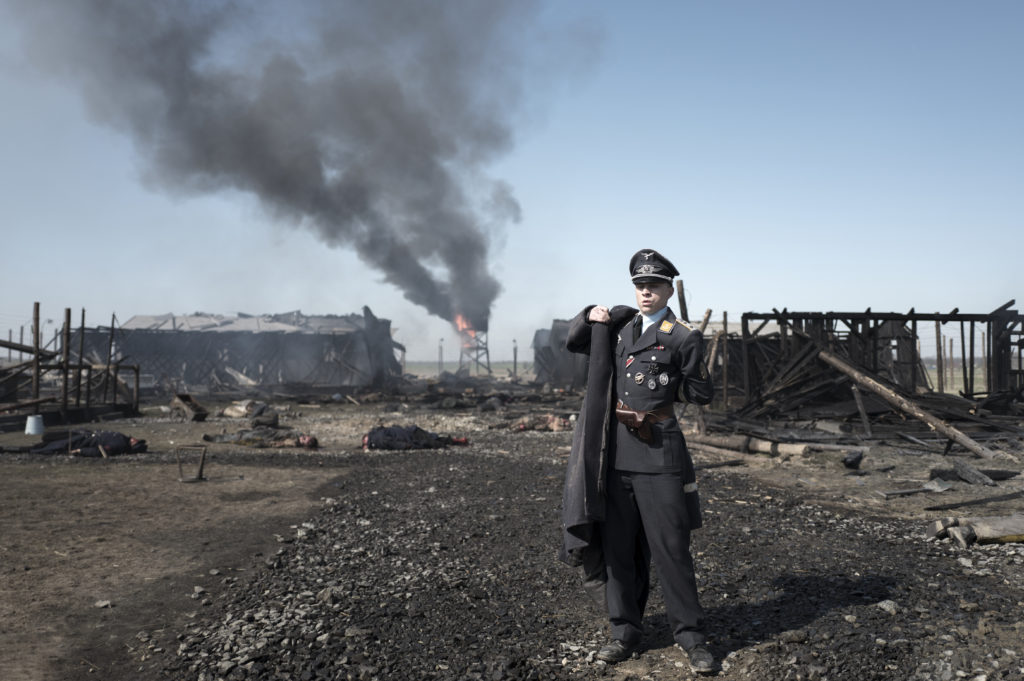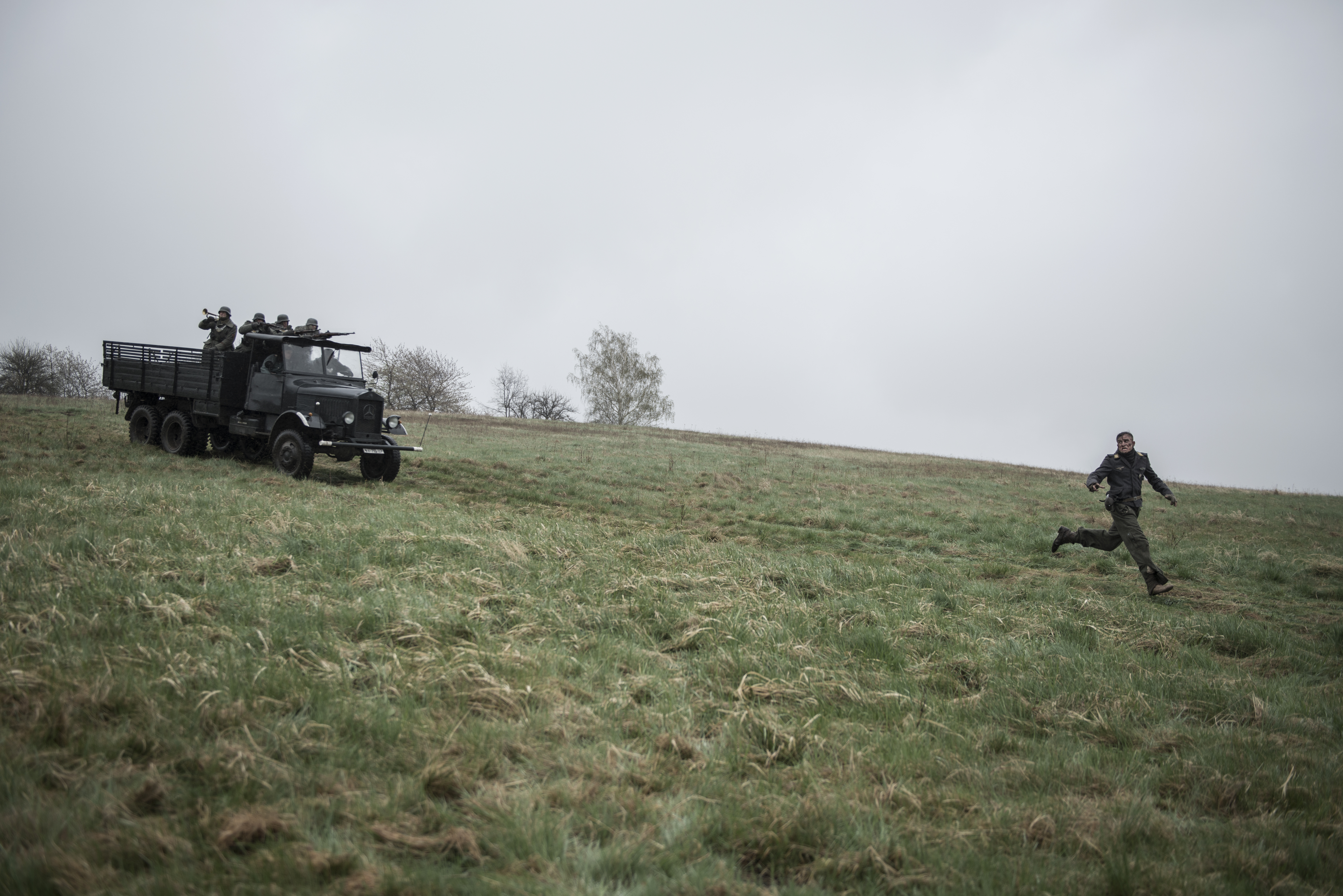Robert Schwentke, director of the powerful new World War II film The Captain, explains his influences in this exclusive interview:
Frans Masareel Woodblock Prints
When I was very young, when I was about five, I found a map of wood prints – woodblock prints by Frans Masareel in our cellar. Growing up in Germany, you’re exposed to every frame ever exposed in concentration camps, war camps — because they wanted you to see everything. They wanted to raise a generation of pacifists – they wanted to counter balance our history. And it worked with most of us – it worked with me.
And when I saw Frans Masareel woodblock prints, they spoke to me in a different way than the documentarian material that I had seen, and they spoke to me more deeply and emotionally. They stayed with me my whole life. He was Belgian, and not German. He did prints on World War I and during the economic depression. I thought that the lack of detail that comes with wood printing was exactly right to create a contrast of what was depicted, and the way it was depicted. And that contrast, I think for me, was where the emotion was generated.
To me, The Captain was a wood print. The contrast between the beauty of the film, and the ugly things it depicts, very much comes out of my experience of looking at these Frans Masareel prints.
Weimar Republic Art
Another huge influence was Weimar Republic art: Otto Dix, Max Beckman – all those people. If you had walked into the hotel set for example, you would have felt like you were standing in an Otto Dix painting. Granted, we did everything in black & white. But that kind of grotesque and decadence, was very important for us. There’s a little bit of a Brothers Grimm influence (laughs), when he falls under the tree root in the beginning.

German Romanticism
This being a film, our influences outside of cinema, were predominantly German Romanticism and Expressionism – the only two art influences that come out of Germany – but they’re both in there. I would also argue that National Socialism would have been – or let’s put it differently – I think there’s a path from Romanticism to National Socialism. There’s a connection between the two. That kind of enchanted reality. That turning of reality into art. Of course that’s what they practiced, that’s all Romanticism of course. You know, this exalted state of mind.
In terms of cinema, the influences: there’s only two films really from the point of view of the perpetrators in Germany. So most of my influence is… well I guess the lack of these types of film was an influence (laughs), or a motivation for me to make this film. There’s no question about that. My influences are Miklós Jancsó — especially The Red & the White and Andrzej Munk’s The Passenger.
The Passenger (Andrzej Munk, 1963, Poland)
The Passenger is an interesting film, as it only exists as a fragment. Andrzej Munk died in a car accident before he could finish shooting the film. His friends finished it with voiceover, and with stills from the set. It turns out that a fragment is a very suitable form for the narrative it depicts: for dealing with trauma and memory, and dealing with the past and violence. It was inspiring to see that you don’t always have to bring everything to its ultimate and perfect conclusion in terms of narratives. Not every thread needs to be tied at the end. That was very interesting to me. Also the way he shot Autschwitz was very interesting. We didn’t make a film about the holocaust, but the war camp barracks were not that different from concentration camp barracks and the way that Munk shot the actual camp was very interesting. I had never seen it shot that way.

The Red & the White (Miklós Jancsó, 1967, Hungary)
Interestingly, if you look at the films of Miklós Jancsó, yes they are historical narratives, but they are clearly a commentary on the Hungarian culture, and Hungarian politics. That was inspiring to me. I felt you could make a narrative that still resonates today even if it takes place in the past. Our goal was to make a modern film, that specifically took place in 1945 and that deals with issues that are eternally applicable and still relevant today. Jancsó is also really interesting in the offhandedness of his violence.
Other Influences
A lot of Eastern European cinema was important. A lot of Polish films, a lot of Czech films. Diamonds in the Night (Jan Němec, 1964, Czechoslovakia), Come and See by Elem Klimov (1985, Soviet Union). Lacombe, Lucien (Louis Malle, 1974, France) was also really important because it shows opportunism in the guise of ideology. Another film that is always on my mind is Hard to be a God, by Alexsei German (2013, Russia / Czech Republic). What I like about it is that its familiar, and at the same time utterly alien (laughs).
Interviewer: “What about Diamonds in the Night?” (Jan Němec, 1964, Czechoslovakia)?
Yes, just the idea of kids being lost in the war; becoming these playthings of history. There’s actually a shot, the first shot of Diamonds in the Night, is something we payed homage to in the first ten minutes of the film.
The Captain is out now on Digital HD and DVD from Signature Entertainment. You can watch the opening scene below:
